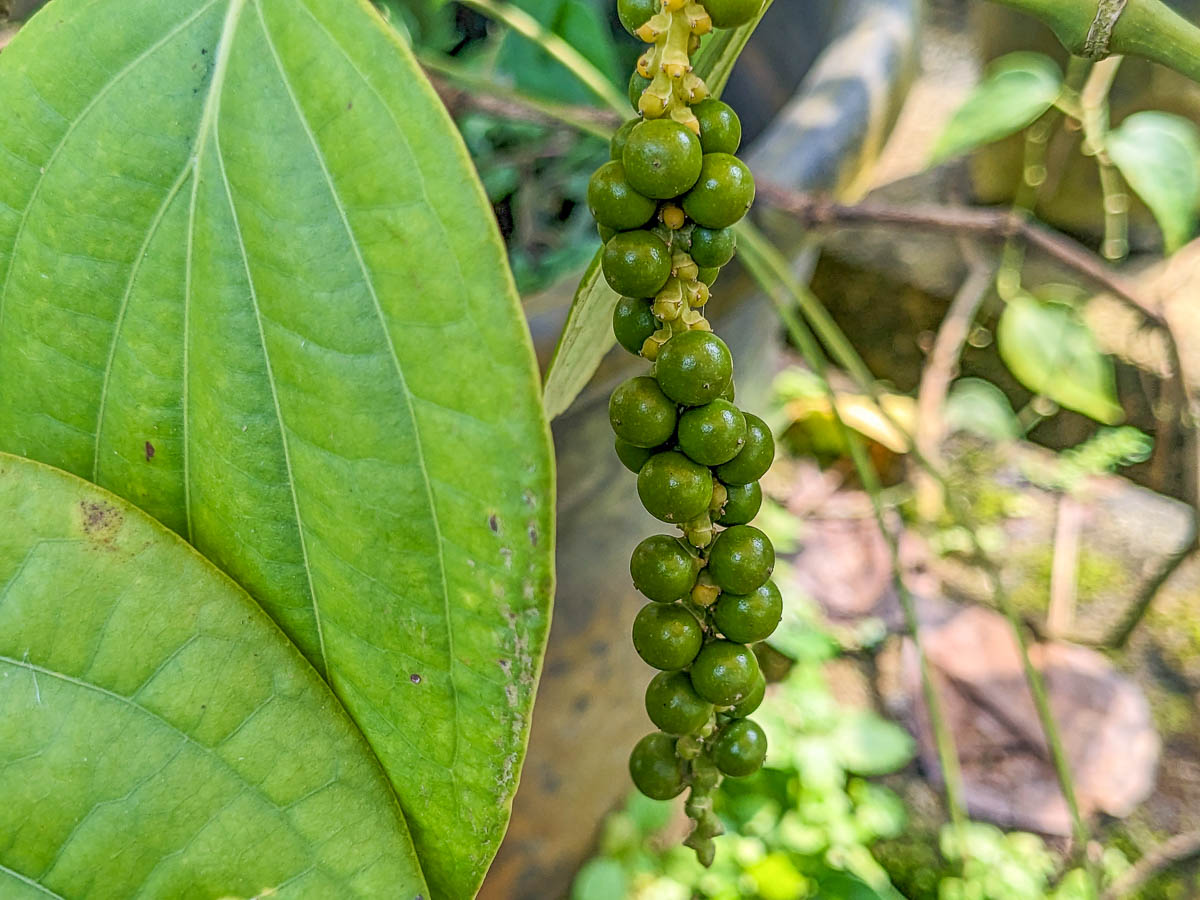Common Pepper
Common Pepper (Piper nigrum)
Other common names: Pepper Plant, Black Pepper, White Pepper, Madagascar Pepper, Lada Hitan, 胡椒, 白胡椒, 黑胡椒

Common Pepper plants produce small hard fruits that can be processed into various kinds of pepper. Traditional black pepper is made from the dried immature fruit, white pepper is made from the seeds of mature fruit, while green pepper is made from fresh, immature fruit.
As a perennial vine, it is an uncommon sight in edible gardens, and is usually found growing up a wall or trellis.
Sun and soil needs:
This vine does best in gardens with a minimum of 6 hours of bright indirect sunlight or dappled shade. More than 6 hours of direct sunlight might burn the plant.
Plants do best in pots with loamy soil at least 30cm deep, or in true ground. The plant can be grown in smaller pots about 20cm deep, but growth will be slower and the plant will produce less fruits.
Sowing seeds:
Seeds can be sown directly into pots or the ground around 15-30cm apart. Lightly water the soil until damp, once a day. Seeds should sprout within 10 days.
The seedlings are vulnerable to heat stress and wilting. Water seedlings daily or once every other day during the dry season.
Growing:
As a fast-growing vine, this plant needs a tall, sturdy trellis to scramble on. It can also be trained up walls, or large trees.
Common Peppers grow readily without fertilisers and will produce fruits all year long. However, they can be fed with fertilisers high in Phosphorus and Potassium once a month after the first flower to encourage additional flower and thus fruit growth.
Because the vines will grow on top of each other, it is a good practice to prune regularly and remove dead leaves and vines to improve ventilation and allow light to reach more of the plant. Regular pruning will also encourage the plant to grow more shoots and produce more flowers and thus fruit.
Harvesting:
Plants will take 3-4 years to mature from seed and produce flowers. Flowers themselves may take up to a year to develop into ripe fruit. However, the plant will produce flowers and fruits continuously for many years once it is mature.
Immature fruits can be harvested for use as green pepper once the green fruits fill out the spike. Mature fruits are red and can be dried to produce black pepper. Alternatively, the mature fruits can be fermented to remove the flesh from the seeds to produce white pepper.
Seeds to be used for white pepper can also be used for immediate planting to grow new plants.
Propagation:
This vine can be grown via seeds or cuttings rooted in soil or water.
Common problems & solutions:
If your plant has few to no flowers, you can fertilise the plant with fertilisers high in phosphorus and potassium. These nutrients encourage root and flower growth, which are important for the plant to produce more fruit.
Aphids, Mealy Bugs, Whiteflies, and Spider Mites often infest the plant if it has underlying problems like repeated wilting from heat stress. Mechanical pest control methods like pruning the infested parts are the best methods for managing these pests in the short term, but resolving the underlying problem will prevent them in the long term.
Wilting leaves during hot weather is a sign of heat stress. Increase the number of times the plant is watered daily, and apply mulch at the base to prevent water loss.

